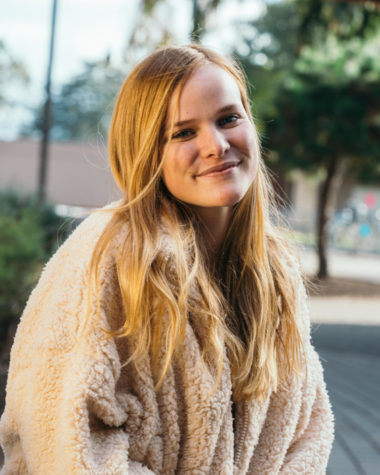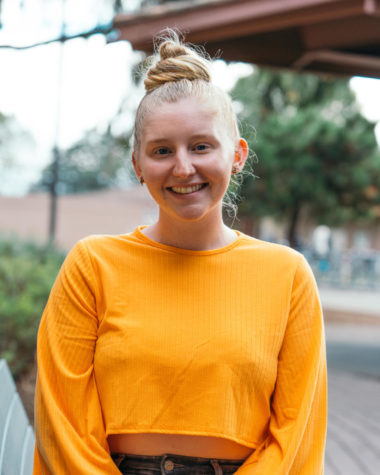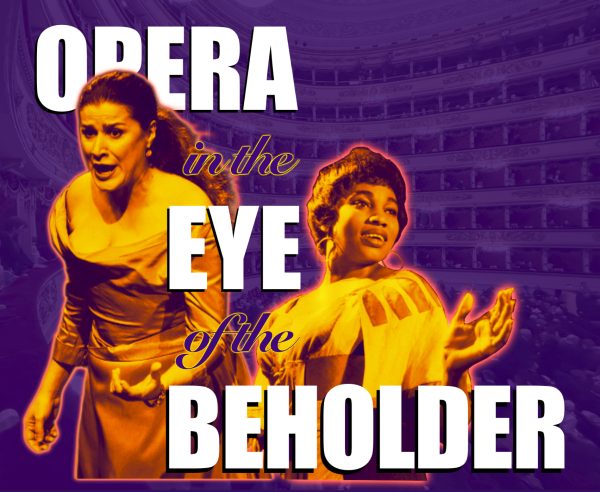Let’s Talk About Sex (Ed)

While methods vary, the presence of and level to which sexual education is taught remains an extremely controversial topic. However, the ultimate hope is to teach a proactive sexual education in a way that will protect the health and wellbeing of adolescents, while simultaneously protecting each individual’s sexuality and personal beliefs.
Introduction
Whether adults choose to look the other way from or refuse to prompt discussions regarding sex among adolescents, many teenagers cannot help being curious or even experimental when it comes to the taboo topic. The persisting intrigue of the unknown allocates a responsibility to many parties—whether it be parents, friends or mentors—to learn and educate the younger population about all aspects of sex in order to ensure safety, comfort and control in their adult lives. With sexual education integrated into many public school curricula, schools have also taken on this task to ensure that all students learn about their anatomy, choices and safe sex options before they graduate. However, the question that continues to persist concerns how schools should best teach such an undiscussed, controversial topic and how the curriculum will reflect the political and social values of the area in which it is being taught.
As early as 1912, the National Education Association initiated programs that trained teachers specifically for sexual education. In the 1960s, during the Sexual Revolution, a time period of “Sexual Liberation,” there was an increase in acceptance towards non-heterosexual relationships and increased discussion and normalization of contraception, premarital sex and pornography. Then, after the Supreme Court case Roe v. Wade, abortion was legalized throughout the United States. The Sexual Liberation promoted discussion and normalcy around sex-related topics and emphasized the importance of sexual education in schools. Although sexual education started in the early 1900s, private schools could still refuse to include it in their curriculum—as many did throughout the 60s. Letitia Burton, a Palo Alto High School Living Skills teacher, attended an all-girls Catholic school in the 60s, where students were not taught sex education. “I just always saw the difference between people who had an understanding of safer sex and those that didn’t,” Burton said. When Burton reflects on her lack of education, she talks about the effect it had on her classmates and the many unplanned pregnancies that she knew of and heard about. “Having comprehensive sex education is so healthy because teens get an understanding of their body, how their bodies work and [are] given enough information [so] they can make informed choices,” Burton said.
Educators, politicians, parents and many other people who stress the importance of sexual education believe that the period of time in which it is taught has a noticeable influence on its effectiveness and relevance. While many public schools in the U.S. have incorporated sexual education into the middle and high school curriculum, other countries have taken larger actions to educate their youth. According to the Fatherly article titled “How Sex Ed is Taught Around the World, From Sweden to Cuba,” the Netherlands begins teaching children as young as five years old about sexual health, which seems to have a positive effect on their adolescent population, resulting in one of the lowest teen pregnancy rates in the world. Argentina has also made efforts to prevent teenage pregnancy by offering free contraception to girls ages 14 and older. Burton also recognizes the importance of timing, recommending that students should take advantage of the Living Skills course offered earlier on in their high school careers. “Taking it earlier in your high school career, like sophomore year, is really beneficial because you have already had some exposure,” Burton said. You have had some conversations before you are kind of getting out there.
Planned Parenthood
Along with schools providing information on sexual health, many organizations also offer support concerning sexual health, offering various options to individuals regarding their own well being. Planned Parenthood is one of the most recognized organizations, offering birth control, sexually transmitted disease (STD) testing, abortions, cancer screening, hormone therapy, female exams and more—all free of charge.
In 1916, Margaret Sanger, alongside her sister Ethel Byrne and activist Fania Mindell, opened the first Planned Parenthood clinic in Brooklyn offering resources and advice to women. Today, Planned Parenthood continues to support many young women in the U.S.
The Planned Parenthood website offers an abundance of information ranging from topics of sexual health and relationships to simply growing up. The website also includes an online tool called “Ask Roo,” a free and private online chat service that allows people to consult with a robot. “Roo” is programmed to respond to questions with information backed by healthcare providers, offering people the opportunity to further self-educate and learn the answers to questions they might be afraid to ask otherwise. Planned Parenthood is not only a resource for adolescents but also an outlet for educators and parents as well. They offer advice and information regarding conversations with kids and young adults about the importance of their sexual health as to get a better understanding of themselves as well as their own bodies. Planned Parenthood as an organization has received a lot of backlash for some of the medical procedures they perform, including abortions. Being a federally-funded organization, this causes a great deal of disagreement among political parties that have strong opinions regarding abortions.
In the past, the government has threatened to cut their funding due to their beliefs regarding the act of performing these procedures. Despite this, Planned Parenthood has continued to receive government funding and has seen a large increase in private donations.
Real Options
Located just across the street from the Mountain View Planned Parenthood, Real Options provides expecting mothers with the support that steers away from abortion, instead focusing on adoption. Despite their opposing views on abortion, Planned Parenthood and Real Options offer similar guidance and services.
Just like Planned Parenthood, Real Options also provides a safe, confidential space for teens to come in and receive help in many different ways; the facility hosts educational sessions, called “Real Talks,” in which subjects ranging from sexting to STDs are discussed, and free, confidential pregnancy tests and ultrasounds can be administered. Additionally, support services are offered that help those with unplanned pregnancies continue to fulfill their educational and employment goals.
Although abortions are not performed at the Real Options clinics, the website provides information on abortion and the associated risks, costs and side effects. The website provides the numbers of numerous Real Option clinics in which patients can call if they want to complete the process of reversing an abortion pill.
The Mountain View site was the pioneer Real Options resource center and became a medical clinic in 1999. The location of Real Options as a neighboring clinic to Planned Parenthood was a strategic move made by the executive director of Real Options, Valerie Hill. “We share a parking lot with a local abortion clinic,” Hill said. “That’s when we saw a huge increase: 66 percent more babies saved that year. We are targeting their locations to offer women another choice, giving them another place to come to for support and medical services. We want them to make a choice that they can live with.” Despite the suggestion of competition given by Hill regarding the two clinics, both Planned Parenthood and Real Options have a similar goal of providing a private place where teenagers can feel welcomed and unashamed to discuss topics of sex and find solutions to sex-related problems, whether it be STD and STI testing, sexual harassment support or a decision concerning an unplanned pregnancy.
Private School Curriculum
Although many public school systems have instated guidelines concerning what schools are required to teach, private schools are independent and have the power to teach or omit subject matter as they see fit. Many private schools determine their sexual education curriculum according to their religious affiliations. One example is Mercy Catholic High School in San Francisco, where sex education is often defined by the abstinence-only curriculum. “As a Catholic, you were taught: save yourself for marriage and birth control is not allowed,” said Laura Lombardi, former Mercy High School student. “I just remember sex being spoken about as a perfunctory way to have children.”
In terms of physical health, Lombardi said she and her peers were separated by gender and taught basic male and female anatomy. “It was very matter-of-fact,” Lombardi said. “We were shown images of body parts and that was it. We were not taught about STDs nor how to have safe sex to prevent both pregnancy and the spreading of diseases.”
Contrastingly, according to Catholic Parents Online, there is a belief that sex education teaches students “how to do it and how to not get caught lessons” and that “children don’t need sexual education, they need chastity education.”
From Lombardi’s point of view, however, “there were a lot of girls in my class who were having premarital sex, I think partly because it was made to seem ‘forbidden,’” Lombardi said. “There are much better ways to go about it versus fear, hell and slut shaming.”
LGBTQ+ Representation
Of the schools that teach beyond abstinence in their curriculum, only about 12 percent address same-sex relationships—Paly being one of them. “I learned a lot in living skills, I really did,” Paly senior David Foster said. “Beyond the basics of sex, [including] all of the important issues to know about sexual health, I learned in living skills. It was very helpful.”
Foster, who identifies as gay, feels as though his sexual orientation was represented throughout the course, much of which he attributes to his teacher Ms. Clohan. “I had a great teacher, and I really think she made a point to keep it accessible to everyone, regardless of orientation,” Foster said. Though he is still left with a few questions, Foster believes “we’re really lucky that our sexual education system is strong enough that a lot of my questions were answered through the course because we really took time to go into it.”
While California and its schools are often labeled as being more progressive, in part due to their general acceptability of the LGBTQ+ community, other states believe that by teaching all-inclusive sexual education—where more than simply heterosexual sex is addressed—homosexuality is promoted to their young students. Subsequently, nine U.S. states currently have “no promo homo” laws that explicitly forbid health or sexual education teachers from discussing gay, lesbian or bisexual interactions. The LGBTQ+ community feels that this isolates many young students, leaving them with no applicable education and more susceptible to sexually transmitted diseases.








